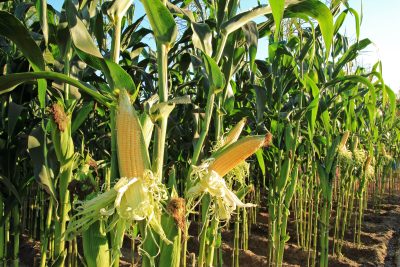Agriculture
Agriculture and farming is a cherished part of American identity and remains an important part of the American economy. In 2020, the agriculture, fishing, and forestry industries contributed more than $175 billion to U.S. GDP and supported more than 2.3 million workers. The health of America's farms and the agriculture industry, however, is tied directly to immigration. Farmers frequently worry about finding enough workers as few Americans seem willing to take on the most difficult and physical farm jobs—particularly those harvesting fresh fruits and vegetables. Yet the H-2A visa, the only agricultural visa currently available to American farms, is too expensive and cumbersome to work for many U.S. growers. We explore this issue—and the way it costs our economy—below.

After Seven Generations, NC Farm Crippled by Migrant Labor Shortage
Kirby Johnson’s family has been farming in Henderson County, in southwest North Carolina, for seven generations. “All I’ve ever done is farm, and my daddy before me, and my grandfather before him,” he says. In addition to running his own 600-acre farm, Johnson helps manage another of… Read More

Want Safe, Homegrown Food? Then Look to Immigration Reform, Says Tennessee Farm Bureau
“The most important industry that we have in this country is agriculture,” says Lee Maddox, of the Tennessee Farm Bureau. “We depend on it every day, and we’ve got to take care of it to make sure it stays that way for future generations.” To do that, however, America must… Read More

Immigrant Son a Leading Napa Vintner — and He Needs Workers
In 1968, Mexican immigrant Salvador Renteria was named viticulturist of Sterling Vineyards, a prestigious winery in Napa Valley. It was a tremendous achievement, given that Renteria had arrived in Napa Valley as a grape picker only six years earlier. He worked his way up to tractor operator, then foreman, manager, and… Read More

Rancher: Migrant Workers Must be Allowed to Cross the Border to Help America’s Operations
Jim Vietheer, owner of a cow-calf operation called HAVE Angus and former president of the Sacramento County Farm Bureau, knows how important cattle production and dairy farming is to the U.S. food supply. But this, he says, depends on immigration. “California is the biggest dairy-producing state in the country,” Vietheer… Read More

On an Arizona Ranch, A Push for Reform
In 1928, Selwyn Justice’s great-grandfather founded the 400-acre Justice Brothers Ranch in Waddell, a small town in Maricopa County, Arizona. Today, Justice, 28, is the fourth generation to manage the organic ranch’s 71-acre “five-season agriculture” business, which cultivates citrus fruits like grapefruits, navel oranges, and lemons, and bespoke fruit like… Read More

Without Migrant Labor, Shrimp Processor Forced to Cut U.S. Workers’ Hours
Richard Gollott first started having trouble finding American oyster shuckers in the 1970s. A third-generation oyster processor, Gollott had watched his father and grandfather easily hire young Americans, at least for a few seasons before they headed to college or another career. But by the 1960s, when Gollott assumed… Read More

Migrant Worker Shortage Threatens Jobs and a Louisiana Way of Life
It was late May, six weeks after Gary Bauer was scheduled to start processing blue crab at his Louisiana plant, and the 58-year-old seafood processor was scrambling to figure out how he was going to stay in business. It was a struggle with wide implications. The livelihood of both his… Read More

Farmer: Without Immigration Reform ‘Agriculture is Going to Head South’
On America’s farms, it’s common to see foreign-born laborers harvesting crops and working long hours in the fields. It’s less common to see the very same workers ending up in charge. But Joe Del Bosque’s family, who came to California’s Imperial Valley from Mexico a century ago, accomplished just that. Read More

Family’s 136-Year-Old Landscaping Business Depends on Immigrants
Hispanic immigrants make up roughly half of the workforce at Peter Scarff’s family nursery and landscaping business in New Carlisle, Ohio. Without immigrant labor, the agriculture and service industries in the United States would collapse, Scarff says. “It doesn’t matter whether it’s manual work or operating equipment, it is difficult… Read More

Louisiana Crawfish Industry Needs Foreign-Born Workers, Says Local Mayor
Sherbin Collette is the mayor of the Henderson, Louisiana, a small town in the heart of Louisiana crawfish country. He is a commercial fisherman who also serves on the Louisiana Seafood Marketing and Promotion Board. And he has deep concerns about the sustainability of the crawfish… Read More
Immigrants and American Farms
In 2019, more than half of all hired farmworkers in the United States were immigrants, or roughly 450,000 workers. In many states known for their fresh produce, immigrant farm laborers make up large shares of miscellaneous agriculture workers—the occupation that includes those hand picking crops in the field.
Share of Miscellaneous Agricultural Workers in Crop Production, Undocumented, 2019
Farm Labor Shortages
In recent years, the number of new immigrants arriving in the country to work in agriculture has fallen by 75 percent. Rising wages indicate this has led to a major labor shortage on U.S. farms—making it difficult for many growers to stay in business or expand their operations. The workers left are also aging rapidly, meaning shortages will likely worsen as they retire.
Decline in Key States
The Aging of Foreign-Born Farm Workers
The Cost of Our Farm Labor Shortage
Because agriculture is intertwined with so many other industries in our economy—such as transportation, packing, and irrigation—a shortage of farm workers hurts the U.S. economy more broadly. We estimate U.S. growers would have produced $3.1 billion more in fresh fruits and vegetables per year by 2014 had farm labor not been an issue. The table in this section shows the costs to the U.S. economy for failing to meet this target.
Rising Imports
In recent years, there has been a dramatic increase in the amount of fresh fruits and vegetables Americans eat that is imported. Although many factors play into this phenomenon, we estimate labor shortages alone explain 27 percent of the market share decline experienced by U.S. growers from 1998-2000 to 2010-2012. Had growers maintained their hold on the domestic market, an estimated 89,300 additional U.S. jobs would have been created by 2012.
Jobs Americans Won’t Do
U.S. fresh produce growers have long said that few, if any, American workers are willing to take on the most arduous farm jobs. We studied this issue in North Carolina, examining how many American workers actually applied for heavily advertised farming positions in 2011, a period when the country was still recovering from the recession. The table in this section shows the results.
The H-2A Visa
The H-2A visa program, the only visa currently available to bring in temporary agriculture workers, is too cumbersome and unworkable for many farms. Farmers desperate for workers frequently go through the application process only to receive their laborers late, resulting in crop loss.
Sources:
1 “Why Domestic Agriculture Needs New, Workable Farm Labor Alternatives Now,” National Council of Agricultural Employers, 2011. Available online.
2Ibid.
3Ibid.
Make a contribution
Make a direct impact on the lives of immigrants.
